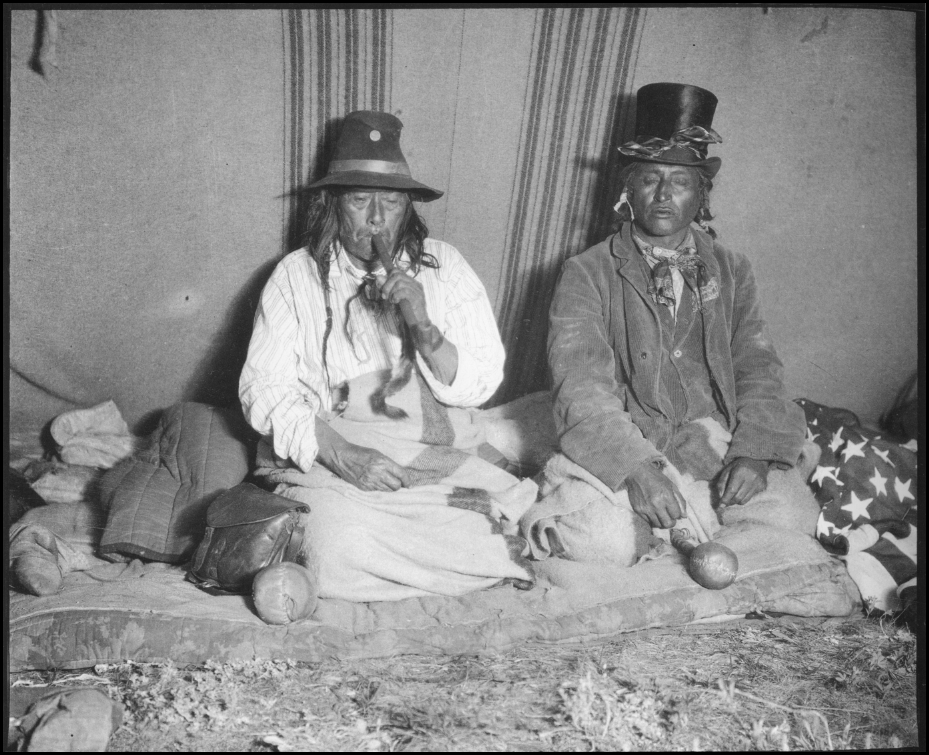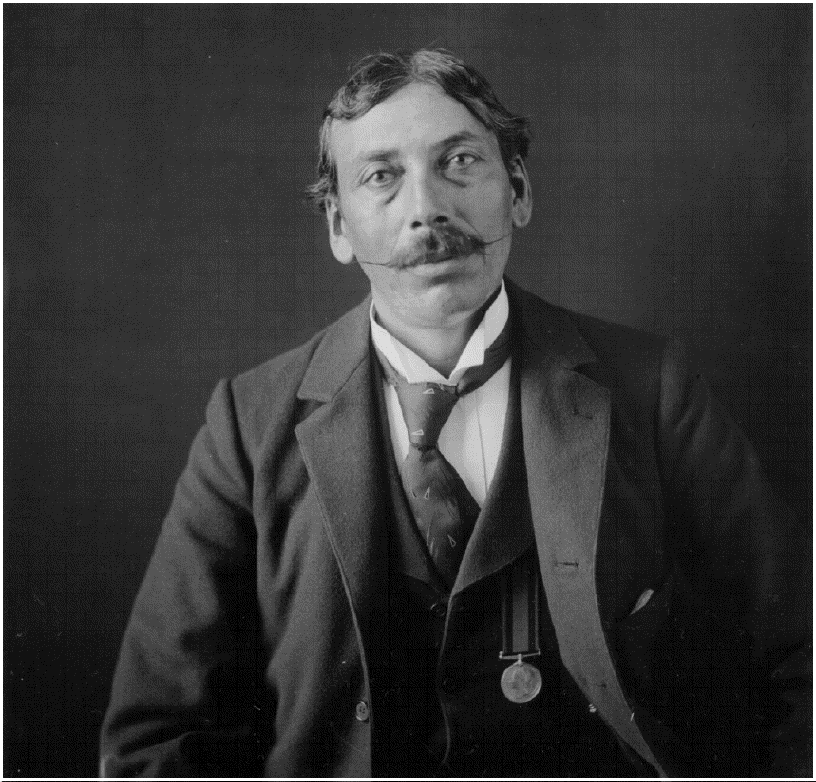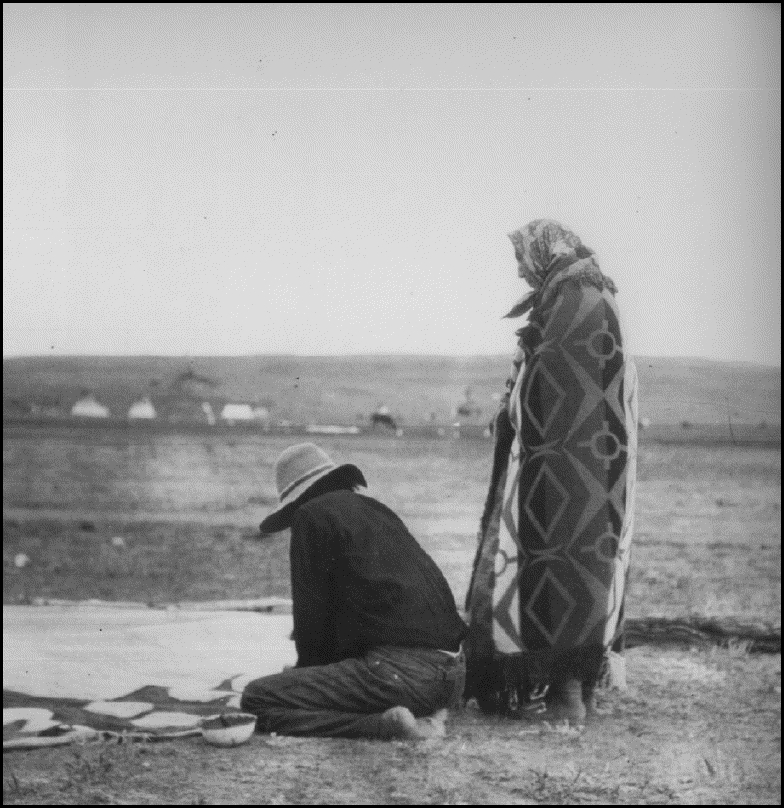
Lanterns on
The Prairie
The Blackfeet Photographs
Of Walter McClintock
Steven L. Grafe, Editor
(University of Oklahoma)

Walter McClintock was what we used to call a "Semihole" or half-assed Indian. He graduated from Yale in 1891, contracted typhoid fever, and recovered at a dude ranch in Montana. He soon became an expert on the Blackfeet Indians there at the northern reaches of the Missouri River.It was a propitious time to be an expert on Indian tribes, for the United States had recently decided that it was better to romanticize the Indians than exterminate them. It was a time of The Virginian, the "Indian" nickel, the Wild West shows of Buffalo Bill, the paintings of Frederic Remington and Charles M. Russell.
At first, McClintock came to Blackfeet country with a wax cylinder recorder. He made over fifty recordings of tribal songs, speeches and prayers, and his purpose was to create an opera based on Indian myths. The opera was ultimately composed with Arthur Finley Nesbit ... and was a resounding failure.
We should thank our lucky stars for its disappearance, because at Poia's second performance in Berlin, the critics compared it to "bad Italian opera." One said "the librettist is no poet and the musician no composer," and the audience, according to another writer, hissed, shrieked, and whistled. The still shots of plump German singers in headdress and buckskin is enough to freeze a good music-lover's heart. (We can and should pray that some dummy doesn't dig up the manuscript and get a NEA grant to revive it for public television).
Fortunately, McClintock returned to the tribal stomping grounds with camera, and, between 1896 and 1912, took more than 2,000 photographs. Ninety plates are reproduced here --- reproduced splendidly --- along with dozens of companion pictures from the time.

They show the Blackfeet in full regalia: finely worked beaded dress, crowns of "feather horns," exquisitely decorated teepees, woolen blankets (with what some of us think of as the "L. L. Bean Stripe,") horses grazing, medicine pipes, and something the photographer described as "decorated bonnets."Everything from Blackfeet life is there ... everything ... except reality. No starving natives, no drunks, no bedeviling "Indian Agents," no marauding white men, no poverty, none of the bitter humility of the "American Indian Policy" or "Manifest Destiny."
Steven L. Grafe, editor and one of the writers here says, "Despite the claim that the photos were not posed, that they recorded 'real life,'"
McClintock's cameras selectively scanned the Montana landscape to create a window into Blackfeet life as he imagined it to have existed during the nineteenth century.
"He shows these people as they might have appeared during a romantic heyday, when buffalo were plentiful and young men earned names for themselves while battling tribal enemies."
It's easy to mock McClintock as one of the bevy of rich young dandies who took to the west during the time of Teddy Roosevelt --- but, as a photographer (no matter how biased) he was expert: in scale, composition, and scope. In a few cases, the images are heart-rending. They show tribal life not as it was at the turn of the century, but as we had always wanted it to be.
For this reader, one of the unexpected joys are the names. Not of the mountains, nor the valleys, or the rivers; rather, of the true heroes of these photographs: Medicine Bull, Black Weasel, White Grass, Wolf Plume, Eagle Feather, Three Guns, Jack Big Moon, Bull Child, Drags His Robe, and --- a slightly older Indian woman --- Heavy Breast.
And, too, there are the designs --- elegant beaded dresses, carvings on the medicine pipes, drawings of "dusty stars" woven into the teepees. According to McClintock, these were the names given to the plants "which grew in circular clusters upon the prairies ... They call them 'dusty-stars' because they emit a puff of dust when pressed."
They are supposed to be meteors which have fallen from the night sky and spring up into puff-balls in a single night.

--- Richard SaturdayNote: The middle photograph
is not by McClintock but rather
William Dinwiddie.